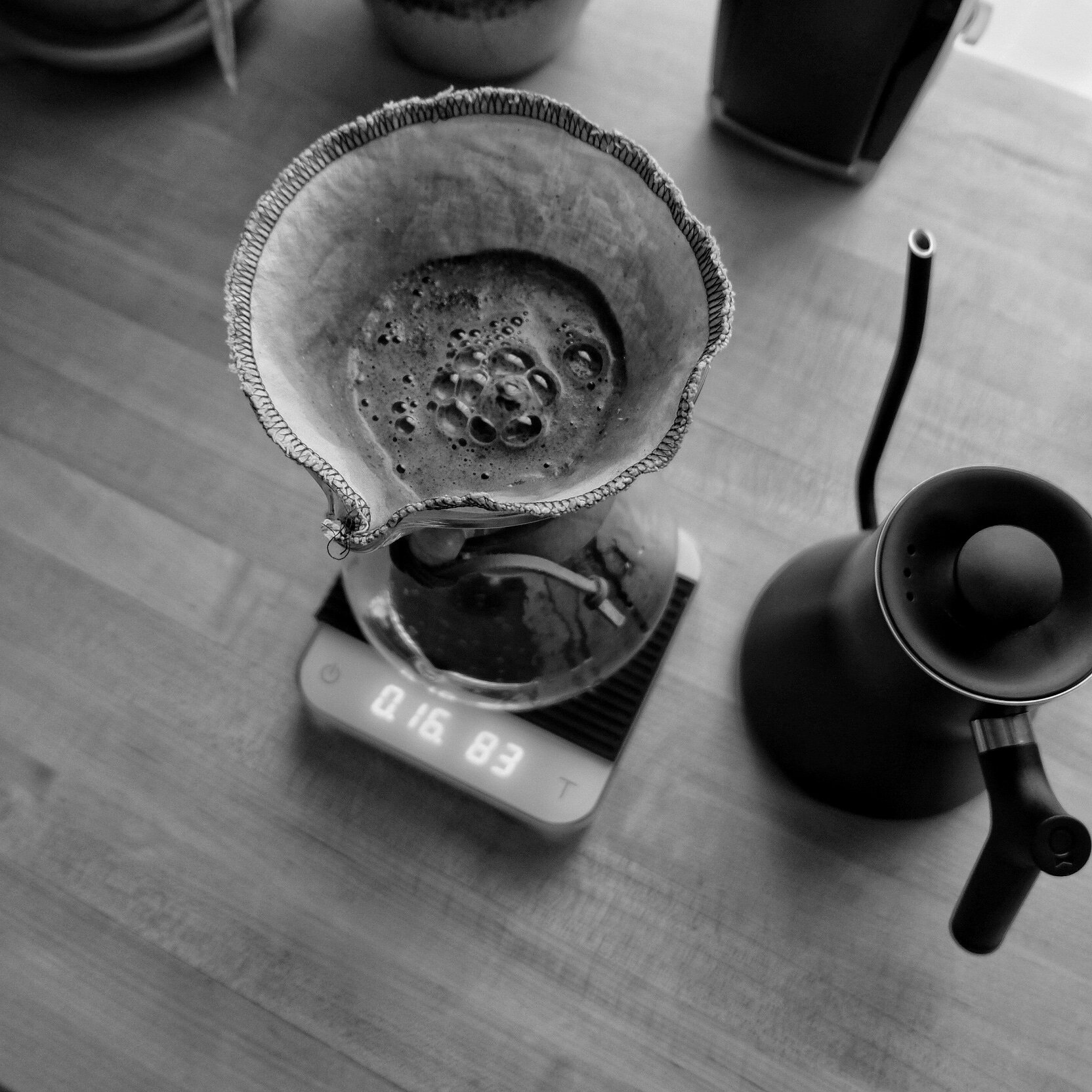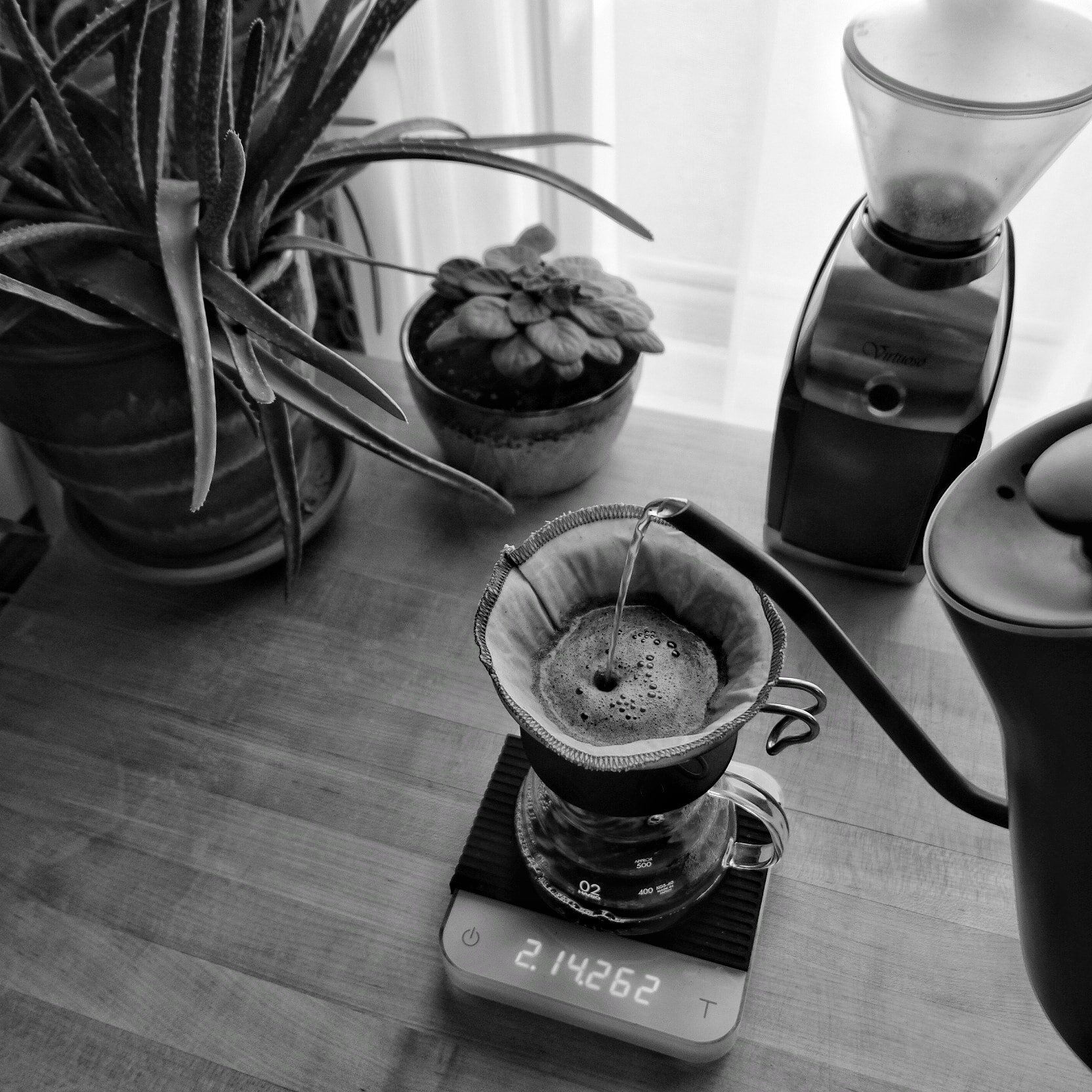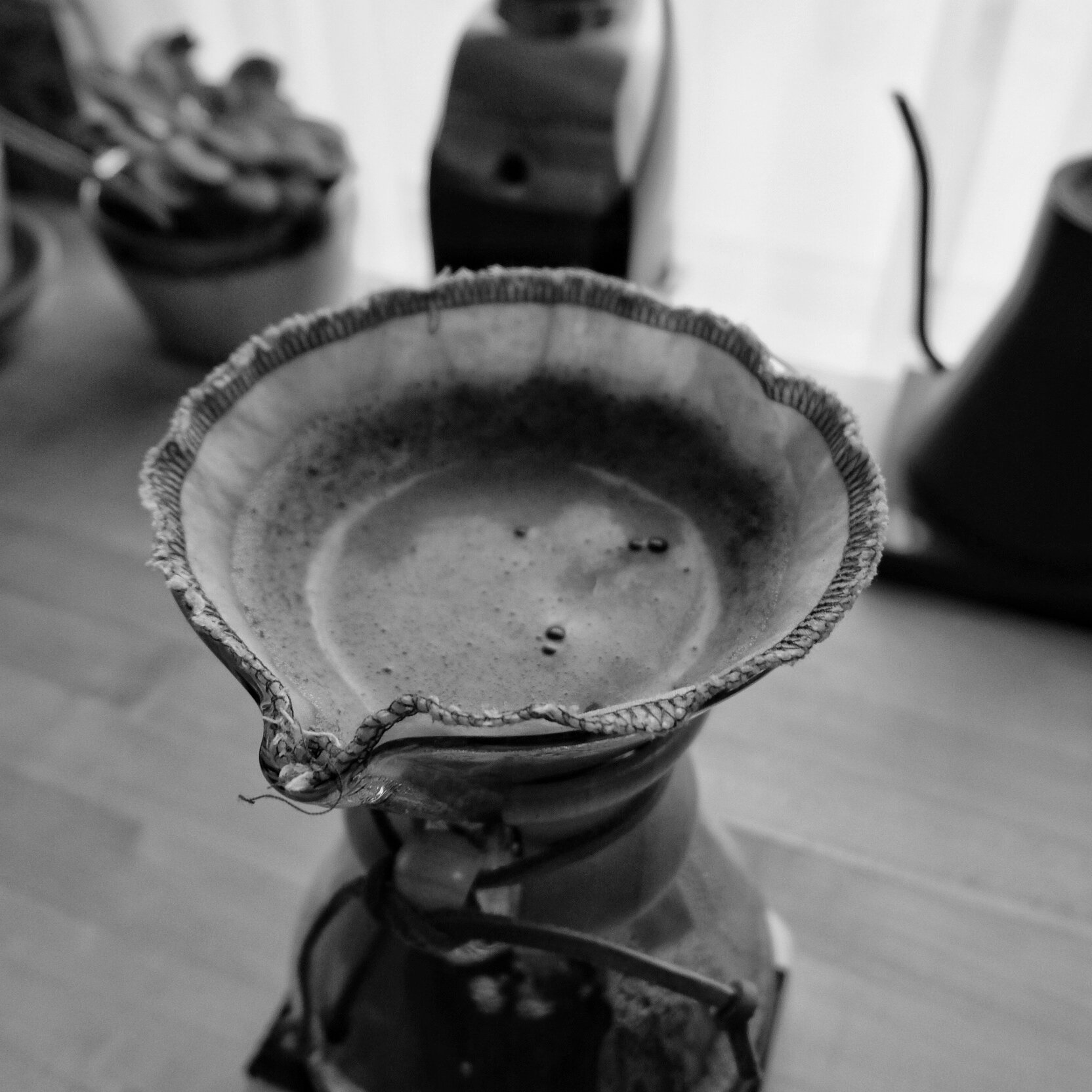Cloth Coffee Filters: Are They Worth It?
Looking to move away from paper coffee filters, or looking for a more sustainable alternative? Unsure about metal filters? Then cloth coffee filters are worth a look.

2025 Update: people are still finding this article five years after I wrote it, so I've added an update that gives my current thinking on cloth coffee filters. However, I recommend reading the original piece first to get the whole context.
Are cloth coffee filters worth it? Short answer: yes, I believe so. Long answer: well, read the article.
Last year, while doing research for this article in Sierra Magazine detailing ways to lower your personal coffee carbon footprint (a slightly futile activity, it turns out), I decided to take my own advice and replace my paper coffee filters with cloth.
I’ve always used paper filters, just as you have probably always used paper filters. As a barista, the act of grabbing a new filter, unfolding it, and placing it in the brewer was second nature. They’re just… what we use.
What kind of paper are they made from? Is it sustainable? How is said paper treated? I never thought about it. The only nod to environmentalism was the switch from bleached to unbleached Chemex filters.
I did some research, took some advice from the internet, and settled on a box of Chemex filters from Austin, Texas-based CoffeeSock. Currently, a pack of two is $13.
This March, after I ran out of Hario V60 paper filters, I bought a box of CoffeeSock’s cloth V60 filters (also $13).
(If you’re in the UK or Europe, CoffeeSock will ship to you, or you can try a more local option like these from Earthtopia—of course I can’t vouch for them, but hey it’s an option.)
So, I’ve had six plus months of using cloth Chemex filters, and a couple of months using their V60 counterparts. What are they like? Are they better than paper?
Note: this is all my personal rambling opinion—”better” is a meaningless word here, exactly zero scientific rigor or actual quantifiable research was used, and I paid for everything myself.
Just wanted to get that out of the way.
The Brewing Experience—Chemex
First things first: CoffeeSock recommends boiling your new filter for ten minutes in fresh water to sanitize and pre-shrink. Best not skip this step.
Now, let’s consider the filter itself: CoffeeSock’s offerings are made of Certified Organic cotton (cotton, it should be noted, isn’t without its environmental problems—even the organic kind). They’re made in Austin, Texas, and come in a nice plastic-free box that includes lots of handy info about brewing and cleaning and whatnot.
The Chemex brewer is famous for (among other things) the coffee it produces: light, clean, with a delicate body. This can put people off—thin is the criticism I’ve heard leveled most at the Chemex brew—but in general it’s a very popular brew method.
It’s also beautiful, and is even in the Museum of Modern Art’s permanent collection.

Its distinctive brew is influenced by its filter, a thick paper square that is folded to created even thicker layers. This filter slows down the brew and helps with extraction, but it also removes many of the oils and other components that give coffee its body and richness.
With a cloth filter, this distinctiveness is less apparent. The coffee I’ve made using the cloth Chemex filters from CoffeeSock have been more similar to a V60 than to a traditional Chemex brew.
If you’re a fan of ultra light-bodied, delicate and subtle coffees, then the cloth filter might not be for you. Personally, while I like the classic Chemex brew, I’ve been impressed by the consistency and depth of flavor that can be achieved with the cloth filter.
In general, I’ve found a slightly finer grind setting is needed for the cloth filters (I use a Baratza Virtuoso grinder, if you’re interested) but said filter is also very accommodating when I forget to adjust the grind. I’ve tried all sorts of coffees using the filter—flashy, light-roasted washed Ethiopias, bombastic natural Brazils—and each one, after some standard tinkering, has turned out well.
The Brewing Experience—Hario V60

The cloth filter in the V60 is actually quite similar to its paper peer: a reliably nuanced brew with consistent depth and body.
There’s not much difference between the two cloth filters, either—the Chemex is just slightly bigger. You could probably swap them out in a pinch, if you so needed.
I’ve had the V60 filters for a couple of months, but so far they have performed admirably.
Only very small grind adjustments are needed when setting up—once again a slightly finer grind when compared to the paper filter is a good place to start—and I’ve found the brews to be forgiving of experiments/mistakes.
Cleaning & Maintenance
Alright, here’s the most annoying part of these cloth filters: cleaning. And it’s really not that annoying.
With a paper filter, you can simply grab the whole thing and chuck it in the compost. Easy as you like. With cloth filters, however, doing that would become very expensive. Instead, you have to dispose of the grounds and then rinse out the filter before drying and reusing.
Look, this is a very small annoyance—it’s only slightly more of a faff than paper filters, takes just one additional step, but for some reason it bugs me. It just adds to all the extra dishes I’m having to do at the moment.
CoffeeSock also recommends occasionally (every 6-8 weeks or so) boiling the filters in fresh water to remove any oil buildup—something that has definitely become noticeable with the older Chemex filters. Boiling them helps keep the filters fresh, but again it’s an extra step that paper filters don’t require. One more thing to consider, I suppose.
So Should I Buy a Cloth Coffee Filter?
I mean, I’m not the boss of you. Do what you want.

But I also like the cloth filters, and will continue to buy more as my Chemex filters expire (CoffeeSock says each pack “lasts about 1 year”) and I run out of paper Kalita Wave filters.
You can, of course, buy other kinds of cloth filters, and there are also metal filters to consider.
I went with CoffeeSock due to recommendations from various people on Instagram (how I do all my coffee shopping).
Things I like about CoffeeSock’s cloth filters: they produce consistent, full-bodied coffees with just the right amount of acidity; they’re forgiving when you forget to adjust the grind at 7AM; they might be better for the environment, and at least produce less waste day-to-day.
Things I don’t like quite so much: they’re a bit of a faff to clean up and maintain. That’s pretty much it.
So there you have it. I hope this has answered some of your questions, and if not then please get in touch. Now, go buy a bag of coffee from your favorite local roaster and brew a cup to celebrate making it to the end of this article.
2025 Update
In the five years since I wrote this article, a lot has changed. For one thing, I also stopped using cloth coffee filters. That's not to say I no longer recommend using them, but it's a lot less binary than a simple yes/no.
There are a lot of good reasons to use cloth coffee filters: they're less wasteful (at least, in terms of materials—we'll get to the water usage shortly) and I really enjoy the coffee that they produce. Even in a Chemex, coffee comes out more full-bodied and sweeter than with a paper filter.
The downside is, they're hugely annoying to maintain—and use just so much water to do so. You have to rinse them before and after every use, you need to store them in water, and you need to boil them in yet more water in order to clean them when they inevitably get choked with oils.
Eventually, I just got fed up with having to do all that. I live in Scotland, and lived in Michigan, so water conservation has never been a huge concern in my everyday life (the existential dread caused by thinking about it in the wider context of the world and its diminishing resources is another matter entirely). However, if you live in Arizona, or Spain, or any of the multitude of places around the world where water usage is a concern? I don't know that I can justify the litres of water that cloth filters require.
That isn't to say that paper filters are better (and maybe I need to write about this) but there are always trade-offs. If you're reading this, you're probably a coffee drinker, which means you already make sustainability trade-offs every single morning. The water usage vs waste conundrum is a real one—and one I've written about regarding coffee pods.
So my updated recommendation for cloth filters, and the question of are they worth it? It depends. If you're okay with the maintenance, and fine with the water usage, and enjoy the coffee they make, then go for it. However, there are trade-offs involved, and it's worth going in with open eyes.



